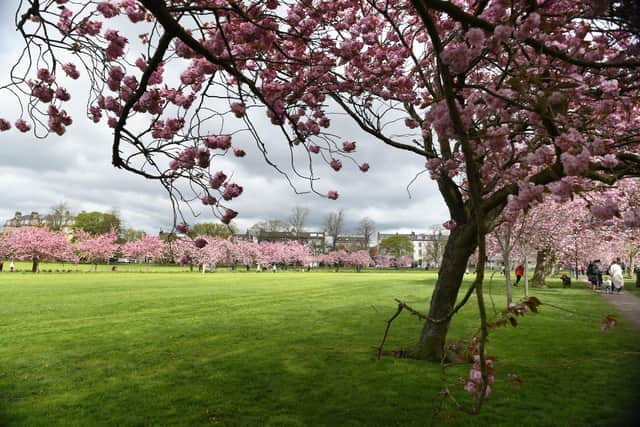Turf wars: Harrogate Civic Society identifies Stray land at risk in row with UK's oldest national conservation group
and live on Freeview channel 276
On the day the deadline for public comments ends, Harrogate Civic Society has backed up its objections to the bid by the Open Spaces Society to have the Stray registered as “common land” by highlighting some of the specific plots of parkland which it argues could be under threat.
Owned by the Crown through the Duchy of Lancaster, when the Common Land Act of 1965 was passed the Stray was purposelessly exempted from being included as common land.
Advertisement
Hide AdAdvertisement
Hide AdBut the Harrogate Stray Act of 1985 gives responsibility for maintaining the Stray to the local authority.


It’s a flexible situation which Harrogate Civic Society says has served the town well.
Founded in 1971, the civic society says the application to North Yorkshire Council to redesignate it under the Commons Registration Act 2006 as “common land” by the Open Spaces Society, which was founded in 1865, is fraught with danger.
The devil in this battle of opposing views of history, it adds, lies in the detail and how you choose to define what Stray land is, precisely.
Advertisement
Hide AdAdvertisement
Hide AdSpecifically, it points out that certain areas within the Stray are at present excluded from designation for practical reasons.
For example, it would not be reasonable for the railway land to be included.
The Harrogate Civic Society said: “If the Open Spaces Society excluded any land that IS Stray Land according to the official map which is part of the Stray Act then suppose the Council wanted to use any such land along with road improvements?
”They would for instance not feel obliged to find exchange or compensatory land for that portion.
Advertisement
Hide AdAdvertisement
Hide Ad"And any part of the Commons Act that was at odds with The Stray act 1985 would immediately set one Act against the other.
"Just think how lawyers could argue about what to us may seem straightforward?”
It may sound an arcane debate for lawyers and scholars but the civic society says the results are important.
Parts of the Stray which are currently not designated as such under the rules of the Stray Act include:
Advertisement
Hide AdAdvertisement
Hide AdChurch Square, Christ Church, The Pavilion close to Knaresborough Road, the railway track (except for the foot bridges and Royal Bridge that is part of York Place) and the Royal Pump Room.
The Stray’s roots got back to 1770 when the Enclosure Act gave Harrogate 200 acres of unenclosed land.
The Open Spaces Society may have a proud record of protecting public rights of way and open spaces in the UK but, Harrogate Civic Society and much of the town believes, it is wrong on this occasion.
When it applied to North Yorkshire County Council to register the Stray as common land in January of this year, the OSS argued the Stray should come under the Commons Act 2006.
Advertisement
Hide AdAdvertisement
Hide Ad“The decision in the 1960s to keep the Stray off the registers was understandable but misguided,” it said.
“Only a quarter of one per cent of registered common land was exempted from registration, and exemption proved to be misleading and unhelpful.
"The Stray has always been common land, and ought to be registered as such.”